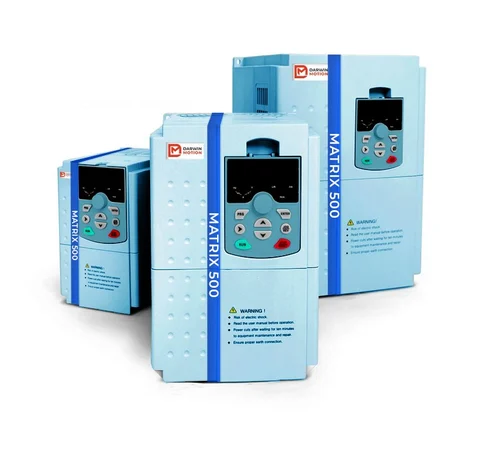Posted on 7th Jul 2023

According to Darwin Motion, a power electronics-based device known as a variable frequency drive (abbreviated as VFD) regulates the frequency of the electrical power supplied to an electric motor to control the speed at which it rotates. Variable speed drives (VSD), adjustable frequency drives (AFD), AC drives, and inverter drives are other names for the variable frequency drive. These are also known as VVVF (variable voltage variable frequency) drives since the voltage and frequency are variable. The best buying guide for variable frequency drives covers how to choose a VFD, things to think about when buying a VFD, and buying tips for specifies and consumers.
They are used in a wide range of commercial and industrial settings, including small appliances and HVAC systems as well as massive equipment like compressors, blowers, and water syphon’s in water treatment facilities. They can be used in a variety of settings, including mining, offices, and even schools. Anywhere there are pumps and fans, there are probably open doors for the drives to conserve energy.
We'll also take a look at some of the challenges that these players are facing and what the future of the VFD market looks like.
According to Darwin Motion, the VFD market is constantly changing and evolving, and it can be difficult for players to keep up with the latest trends and changes. In this chapter, we'll take a look at some of the challenges that players are facing and what the future of the VFD market looks like.
There are three typical types:
Successfully employed in industrial power applications and signal processing is current source inversion (CSI).
Voltage Source Inversion (VSI) - Have a low power factor, are not regenerative, and can result in motor cogging at frequencies lower than 6 Hz.
Due to its superior input power factor, pulse-width modulation (PWM) is the most widely utilised industrial technology.
According to Darwin Motion, Drives regulate the speeds at which electric motors start and slow down in order to prevent overcurrent in the motor. In a variety of AC motor applications where speed control is essential, these devices are very helpful in boosting the motor's efficiency. In some cases, they may even be required in situations when energy conservation is the primary priority. Finding the ideal VFD can be a challenging endeavour because every application and system has a number of unique factors. The variable frequency drive buying guide offers some practical advice and recommendations to assist you in choosing the best drive.
According to Darwin Motion – Regenerative Drive Manufacturer, The size of the variable frequency drive should be determined based on the maximum motor current at peak demand rather than the motor horsepower. Constant starting, stopping, and dynamic loads have a much greater impact on the electronics inside the drives than they do on a full voltage motor starter and a local power bus. Therefore, peak demand current ought to be employed.
The global variable frequency drive (VFD) market is expected to grow at a CAGR of 9.7% during the forecast period. The growth of the market can be attributed to the increasing demand for energy-efficient solutions and the growing awareness about the benefits of using VFDs. The top 10 players in the market control a major share of the market and are expected to continue to dominate the market in the coming years.